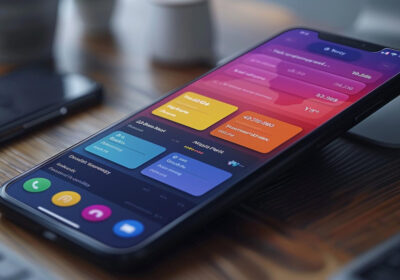Testing mobile applications, unlike software testing, is not something that can be skipped. You may have read about companies skipping or slacking off on software testing when they are on a tight deadline. That can’t generally be applied to mobile technologies. Especially when mobile devices are the prevalent means of communication for not just consumers but also businesses.
Businesses have already started running through mobile applications – those simple pieces of code that influence judgments by providing impressive, immersive experience to the consumers. The applications are meant to meet customer expectations while still sticking to the business objectives, and providing them with an experience that would leave them wanting to use the apps regularly.
And mobile application testing ensures that an application possesses all that, which means there’s no room for errors. The industry standard now is such that every mobile application must pass testing before they are deployed. For that, the testers will have to overcome a lot of challenges.
Mobile App Testing Challenges
Assessing the quality and performance of the application is a daunting task, and quite tricky as well.
- Availability of testing tools – Many companies doing in-house testing might lack the necessary testing tools and testing methodologies, especially when it comes to apps that are multi-device compliant. Such companies generally rely on augmentation partners to provide them with the guidelines, tools, and methodologies required for testing.
- Device fragmentation – Mobile apps are used across multiple devices and platforms like iOS, Android, Windows etc. These operating systems will have different versions as well. There would also be differences in screen resolution, connectivity options, and memory sizes. The testers need to make sure that the app is compatible with everything above. They will need to prepare for one huge headache as well.
- External vs in-house testing – Testers often experience budget constraints and tight deadlines. This would mean the company will have to either outsource the work to a reliable service provider or have it handled by the in-house team itself. This puts more pressure on the in-house testing team.
- Mobile application lifecycle – No piece of code can normally be free from bugs. There will be at least one that didn’t catch the eyes of testers. When the end-user identifies one such bug, he will want it fixed immediately. The application must also be compatible with more recent OS upgrades. This means that testers are required to be vigilant at all times, and always keep an eye on consumer feedback.
These are but a few challenges that testers can face. The point is that mobile app testing is very tricky to nail, demanding solid testing tactics to actually succeed in the testing. An improperly tested application can do a lot of harm for the business. A solid testing strategy should take a lot of critical factors into account.
Here are 6 tactics to concoct a winning strategy that ensures the right proportion of quality assurance and end-user satisfaction with respect to business goals.
Physical Devices or Device Emulators
If the testers are working in an Agile ecosystem, they can use device emulators in the early stages of development, or in early ‘sprints’. Emulators allow rapid testing, and are quite cost-effective as well. Many popular emulators provide pseudo-live environment and network bypass options.
However, to deeply understand how the application can come of use in real-life scenarios, they will have to use physical devices. So basically, mobile testing involves figuring out the perfect combination of physical devices and emulators that gives optimal result efficiently. Physical devices are also ideal for beta testing.
Selecting Mobile Devices
Choosing the right path of testing mobile applications is normally not an easy decision for the testing team as there will be several variables they’d have to consider including the target market and the reach of the application. Device selection is one of those variables.
To select a device, testers will have to take into account many factors such as connectivity options, memory sizes, screen resolution, OS versions, and even form factor.
Testing on Cloud
This particular tactic is gaining popularity owing to how it makes managing countless scenarios easier. The Cloud technology can be leveraged to generate a web-based mobile testing environment where the testers manage, test and deploy applications. In addition, the testing environment on cloud curbs project costs, reduces time-to-market, consequently increasing ROI.
Some of the major benefits of this tactic include synchronized architectures, complex applications support, real-time results, and no additional costs or need for advanced testing tools and licensing.
Performance Testing
Performance testing is mandatory for mobile applications. Smartphones and mobile devices come with large memory capacities at present. So we have to assume that the end-user will have a lot of data on their smartphones. If those data are relevant to the functioning or performance of the application being tested, performance testing is certainly necessary.
The testers should make sure that the performance of the app doesn’t degrade with the increase in data it’s supposed to be working with. Applications with server-side components need to be tested with many number of users.
Network Connectivity
This is a critical factor that significantly influences mobile applications that depend on it. The best course of action here is to test the application in actual network environments it’s designed to work on. It can be done using configurable simulation tools. This will help the testers assess the app’s behavior, and ensure that it performs consistently well across various network environments.
Security Testing
Apps that require users to submit their credentials are looked at with doubt. Generally, users think about providing an app with confidential data and credentials. This is reason enough to consider security testing as very important and mandatory.
Security testing should be done if:
- The app stores credit card details and other payment information
- The app uses network protocols
- The app uses Device ID
- The app requires authentication to grant access to data
- The app locks out the user after a preset number of login attempts
- The app requires many permissions to provide all functionalities
Apps handling confidential data should have security mechanisms that encrypt those data.
Conclusion
Though in-house testing is full of challenges for testers, they can still make the experience better by practicing these tactics. A basic testing strategy might not ensure that the application is fit for use, and delivers the quality it promised. The plan should take several factors into account for devising the right testing strategy.





